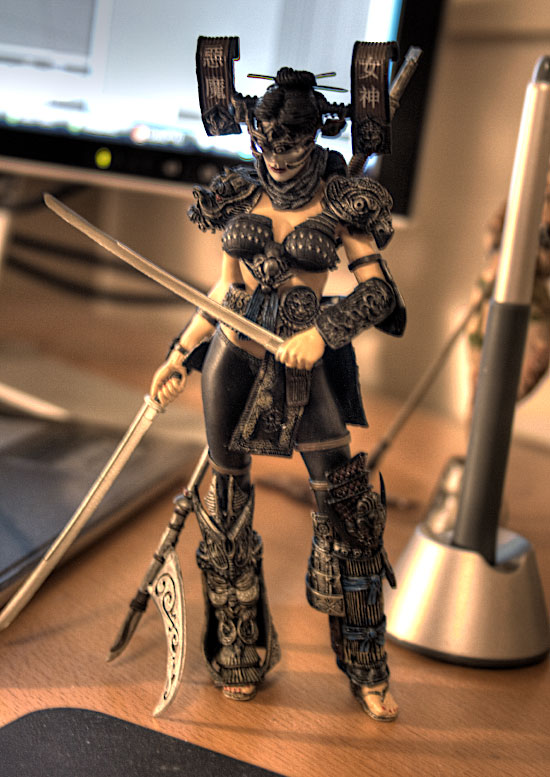Just a quickie…
I’ve been developing my workflow for my film project for some time. I want to have a rock solid pipeline setup so when I go full blast I can aim all my focus at the creative parts. So far I’ve concentrated mostly on the asset exchange, getting meshes and animations in and out of the different applications I am working with, as painlessly as possible. I am pretty happy with where I am at this point.
I’ve also put in much thought into the rendering pipeline, which of course also is really important to get right. So far I’ve mainly be working with animatics and test renders, so I haven’t had to set the rendering pipe in stone yet.
One thing I have decided on is to render everything to a floating point image format. Which has led me back into the dreadful lairs of color management. Again.
I did some lame attempts with color management a few years back, got myself a Spyder 2 calibrator to work with accurate colors. But after the calibration I couldn’t get my head around it with different profiles. Colors started to mismatch between applications and other mysterious things. I ended up uninstalling it and selling the device after a month. I’m pretty sure it was good hardware, but handled by a crappy operator. ;)
Anyway, when doing my initial tests with a floating point rendering pipeline, I encountered the gamma differences between the screen and the rendered images, as FP formats work in a linear gamma, and the screen does not, which led me back into reading up a lot on the subject. The gamma difference is an easy fix, but the control freak in me was not happy that I did not understand completely what was going on, so I’ve studied color management a lot more this time around.
A happy coincidence was that Gerardo Estrada just wrote an interesting article on the subject in the HDRI 3D magazine issue #18 and #19, proposing different workflows with linear color management in LightWave 3D, and have also been very active on the NewTek forums lately talking about the subject.
And that Sebastian Goetsch has just released an excellent set of tools for LightWave 3D, enabling an easy workflow for color management and ICC profiles right within LightWave 3D. Wow!
Well, well, as I’ve spent quite some time understanding the subject this time, and done tons of tests the latest week, I think I’ve actually got the hang of Gamuts, Gammas, ICC Profiles and a color managed workflow through the entire pipeline this time. Will even get myself a Spyder again to get my screen accurate, as I believe I can handle it this time. ;) In the end, which also my tests have shown, having a linear color corrected workflow do enhance both realism and quality of the renders and removes a lot of the obstacles associated with image manipulation. So it’s well worth the time to get it right.
As soon as I’ve implemented a decent, good quality, easy to maintain system/movie player to showcase animations and film clips on my website and blog, I’ll start posting some rendered sequences, and with that also write some more detailed text about my complete pipeline and workflow for my film project.
I’ll definitely also return to this subject and write a decent text or article in the blog about my color managed pipeline when I have had my film project in the rendering phase for some time.
I’m not posting any renders this time, but to not make this post lack images completely, I’ll just snap a photo of my latest McFarlane action figure I got the other week, standing happy on my work desk. :)

Latest addition to my McFarlane toy collection

less working, more blog posts.